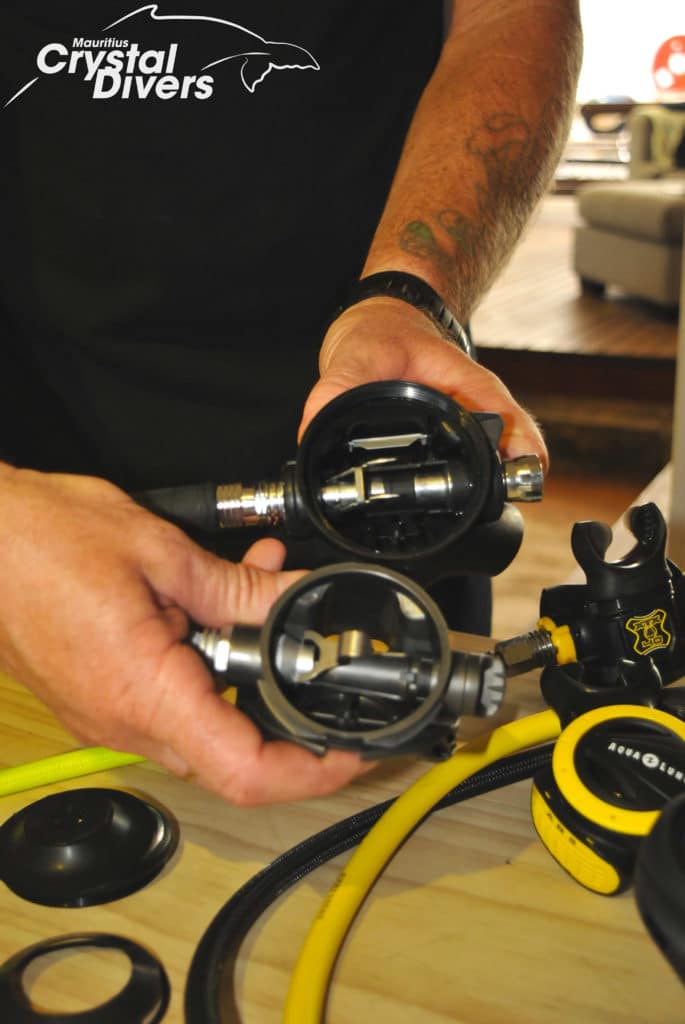Reviewing the Buddy System
As divers, we’ve all grown up on the buddy system, BWRAF. This has become an essential component of dive planning and diver safety.
Even as a seasoned PADI Staff Instructor, I am always looking for opportunities to extend, improve and challenge my scuba diving skills and knowledge. So, I recently became a PADI Self-Reliant Distinctive Specialty Diver and Instructor.
Being able to train students to scuba dive solo throws in to question the entire buddy system. The course also emphasises the crucial importance of understanding, and being able to independently configure, inspect and repair your scuba diving gear.
Diver Readiness

One of the most incredible things about the scuba diving industry, is that it’s such a sociable sport and activity. Naturally, the buddy system becomes more than just a safety aspect.
During the PADI Open Water Diver Course, we learn self-rescue skills, from being able to release and remove cramp, breathe off an alternate air source, to completing a Controlled Emergency Swimming Ascent, and being able to disconnect a low-pressure inflator hose.
Throughout our scuba diving journey, the buddy system plays a fundamental part, alongside your ability to conduct an effective and efficient dive readiness assessment.
We build on these skills in the PADI Rescue Diver Course, by learning more about in-water tows, alternate air source ascents, BCD oral inflation, overcoming vertigo and dropping weights in an emergency.
Going It Alone
As a PADI Self-Reliant Instructor, you learn to re-program the buddy system instinct, to realise that you can still continue a dive if you encounter a minor equipment problem. Or, if you become separated from your buddy. As a well-trained Self-Reliant Diver, you wouldn’t necessarily need to abort your dive under these circumstances. For underwater photographers, this also opens up so many doors – being able to dive slow and hang back to set up and take that perfect picture.
For myself, as an avid wreck diver, my motivation for becoming a PADI Self-Reliant Diver, was to be able to dive wrecks solo. To explore where I wanted to explore, to investigate an area of the wreck that interests me, and to just hang out on the sand and be humbled by the majesty and beauty of the ocean, a big ship and its underwater life.
The PADI Self-Reliant course highlights the need, more than ever, for the right mentality, mindset and attitude before any
dive, because you are your own buddy team. Achieving your optimal zen-like state of mind before the dive is essential. This mindset enables you to go through your own process of assessing, inspecting and configuring your equipment before entering the water. It’s an incredibly spiritual and calming process that I found added hugely to my enjoyment of, and love for diving.
The process also underpins your physiological readiness and environmental assessment before a dive, confirming your ability to safely dive within your own limits, training and experience.
Knowing Your Equipment
The PADI Equipment Specialist Course is a hugely underrated and widely overlooked Specialty. We have worked with so many aspiring PADI Professionals who have often not had the opportunity to properly learn how to take apart and rethread a tank band, to strip a regulator or reconfigure a first stage, maintain tank valves or repair a BCD power and manual inflator. It’s a mandatory part of our PADI Divemaster Course, and we recently had our current Divemaster Candidates put together their own Save-A-Dive kit.
Equipment features hugely in the PADI Self-Reliant Course, from ensuring you’ve prepped and organised your back up equipment, to knowing how to save the dive and keep yourself safe underwater. Knowing your own equipment helps you stay within your limits, manage buoyancy and air consumption, and control ascents.
Knowing what equipment you will need for various types of dives, environmental conditions, and/or depending on the kind of diver or level of diver that you are is hugely important. Don’t buy more or less than what you need, but don’t skimp on quality. This is another tangible matter that you can control before diving.
Feeding back in to the buddy system, it’s important to know what kind of equipment and configuration your buddy has before you plan your dive together.
Save-A-Dive
We asked visiting PADI Master Scuba Diver Trainer Steve Ellery, qualified ASSET-trained Dive Industry and Oxygen Service Technician and Gas Blender, and Visual and Hydrostatic Cylinder Inspector, what his Save-A-Dive kit would contain, and here’s what he recommends as a start…
Fin and mask straps
Cable ties, various sizes
O-rings, various sizes
Bungee cord
Mouth pieces
Split rings
Snap hooks
Allen keys
Start putting together your own personal Save-A-Dive kit, based on your own equipment configurations, preferences and requirements. Become comfortable with your equipment, and understand how it works.
Be Your Best Buddy
Continue your scuba diver training, in whichever field that interests and inspires you the most. Fun dive more often as a dive professional, to ensure that your dive skills and knowledge stay sharp, current and up to date.
Use the gift of time that we have been given as the situation worldwide unfolds, to look in to that course you were always interested in, or to research that dive destination that you’ve always dreamed of. Or, simply, just get your course manuals out and refresh your knowledge and theory.
I hope, that when everybody can safely travel and get back in the water, this time to reflect and learn will make us all more conscientious as divers.


